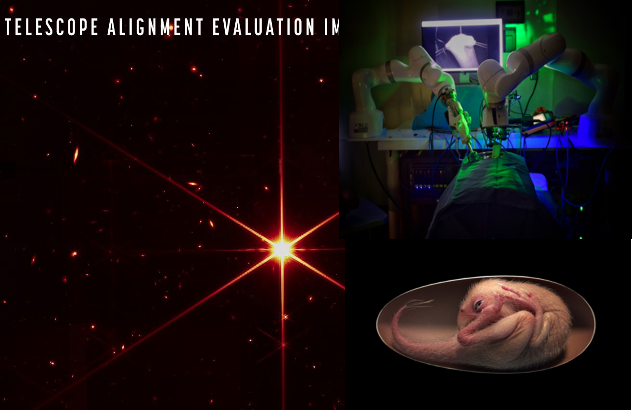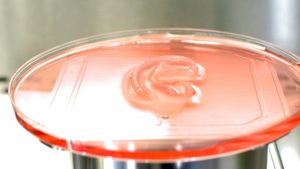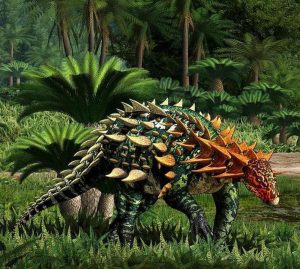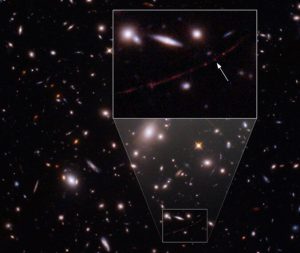
Best of 2022!
As we are about to leave another year behind, we wanted to take a look back on the most important developments in 2022, in a scientific and technological summary of the past 12 months. Without a doubt, 2022 has been the year of “distant horizons”. Exciting news came from space exploration studies, one after another, providing new knowledge and insight about the universe, our galaxy and our own Solar System. In the meantime, news about the human brain, the effects of climate change and technology’s contribution to science often captured headlines. A great deal of evidence hidden in the layers of time also came to light this year, giving us more information about the history of humans and our planet, especially about the tale of the dinosaurs…
New eyes gazing into space
In its journey around the Sun, little is known about our Earth’s companions other than the Moon. Small objects orbiting the L4 or L5 Lagrangian points of the sun-planet systems are called Trojan asteroids, and the existence of one of the largest in Earth’s orbit was confirmed this year.
New advances were made in imaging black holes, one of the most ever-interesting inhabitants of the universe. The most striking was the photograph of the giant black hole Sgr A*, which is located in the centre of our own galaxy although it has long been eluding us due to the density of celestial bodies, nebulas, etc. between us.
Some of the previous “the most” records changed this year. For example, Gaia BH1 in the Ophiuchus constellation was found to be the closest known black hole to us while “Earendel”, 28 billion light years away, has captured the crown of “the farthest star we have been able to detect in our observable universe”, which has an unbelievable size with a diameter of about 47 billion light years.
Not every “day” on Earth has the same length; there are very small differences that we cannot notice in our daily life, yet important for scientists. The shortest day recorded since precise measurements began was 29 June 2022, which made history the shortest day ever.
Another interesting discovery was the “micronova”, a new type of stellar explosion. What happens to stars at the end of their lives is a topic that attracts a lot of interest, as these explosions are the source of most matter in the universe.
With the extraordinary planning of Japanese scientists, stone fragments collected from the asteroid Ryugu and brought to Earth from a distance of 300 million kilometres were examined, and the results were published this year. The stones, which contain data from the early days of our Solar System, support the idea that water on Earth may have come from outer space.
One of the biggest space related fears of Earthlings is the collision of a catastrophically large meteorite with our planet. Although there is not much that can be done to prevent this, the most important step in planet defence took place in 2022. In an experiment conducted by NASA, a spacecraft called DART was navigated to intentionally collide with an asteroid, and managed to slightly change the orbit of the celestial body.
In 2022, research on planets of our Solar System did not slow down either. While Neptune, already known as an ice planet, was found to get colder; the colour difference between Neptune and its brother Uranus also became an important research material. In another interesting piece of news, Jupiter was found to have a dark past where it gobbled up a number of minor planets and other celestial bodies.
Of course, one of the most important astronomy topics of this year was the James Webb Space Telescope beginning its mission, and the photographs it started to send, which are slowly changing our perception of the universe.
Technology and medicine, hand in hand
For the first time in tissue engineering, scientists extracted and expanded cartilage tissue cells from a patient’s ear, produced a new ear using a 3D printer, and implanted the ear to the same patient. Although still too early for organ transplants, the development marked the beginning of a new era in regenerative medicine for skeletal disorders.

Scientist also proved that heart diseases could be predicted through an AI-analysis of sound recordings. The researchers took three different voice recordings from 108 angiography patients, used artificial intelligence to analyse some vocal features that the human ear cannot detect, and obtained a voice biomarker score for each patient. In the end, patients with high scores were 2.6 times more likely to develop coronary artery disease and three times more likely to develop plaque deposition within two years.
A new technique called base editing was used to successfully clear an incurable T-cell leukaemia from a teenage girl’s body. The girl, who became the first person to receive this experimental therapy, has given hope to millions of cancer patients worldwide.
Earlier in the year, a robot surgeon completed a soft tissue laparoscopy without human intervention for the first time. The machine, called the Smart Tissue Autonomous Robot (STAR), made history by performing a highly sensitive operation on a pig, much more successfully than human surgeons.
Brain-computer interfaces being developed by Elon Musk’s company Neuralink, as well as other technology pioneers like Blackrock Neurotech and Paradromics will likely be filling our lines around this time next year.
Environmental pollution, its effects, and creating new environments
While the environmental pollution caused by plastics and its negative effects on biodiversity and ecosystems have been known for years, scientists found micro-plastics in human blood for the first time this year. Although the negative effects of this on human health are not yet clear, the issue needs to be investigated in depth, especially to protect babies and children.
Speaking of biodiversity, new findings -discovered somewhat by accident- have shown that the lifespan of honey bees has reduced by half compared to 50 years ago. According to 1969 data, the average lifespan of honey bees, which used to be 34.3 days on average, is now limited to 17.7 days. The cause is still under further research.

While NASA’s Artemis program to send humans back to the Moon continues to create excitement, scientists have succeeded in growing plants in lunar soil, known as regolith. In the experiments, almost all of the seeds of Arabidopsis thaliana –the superstar of plant biology research- germinated, and lunar regolith was determined to contain no factors that could suppress germination. This is also important for long space travels.
Unraveling the mysteries of the brain…
The normal lower and upper limits of the brain temperature of a healthy person were revealed. Using the Magnetic Resonance Spectroscopy (MRS) technique, researchers working with a total of 40 healthy adults from five different continents and 15 different countries revealed that the average brain temperature is higher than body temperature and that this temperature changes throughout the day. Most importantly, daily variations in brain temperature were found to have vital importance and provide information regarding brain function.
A study published in Nature announced that human brain cells grown in the laboratory were successfully transplanted into the brains of new-born rats and the cells successfully integrated with the rats’ own brain tissue. The development has opened up a new horizon in addressing brain related diseases and injuries.
A mini-brain produced in the lab played the famous 1970s computer game “Pong”. This mini-brain, consisting of about 800,000 cells made from human stem cells, learned to play the game (or at least, learned what it should do) in five minutes. This marked the first time that a mini-brain is observed to perceive and process information from an external source and create a response.
Dinosaurs, mammoths, and other stories hidden in time
The year 2022 witnessed significant discoveries concerning the story of dinosaurs. Scientists determined that the meteorite Chicxulub, which wiped out terrestrial dinosaurs from the planet 66 million years ago, hit the Earth during spring months. In the USA, experts found a fossil leg bone of a dinosaur thought to have died directly as a result of this impact. The Earth was deprived of sunlight for perhaps two years because of the rock dust and sulfuric acid clouds that emerged after the collision.
Except for Thanatotheristes degrootorum in Canada and Guemesia ochoai in Argentina, the first early armoured dinosaur named in the Asian continent, Yuxisaurus kopchicki, was unearthed in China.

Also in China, the world’s best preserved dinosaur egg fossil was unearthed. The fossil, called Yingliang, provided an important finding as it was very well preserved and with regard to the evolutionary link between modern birds and dinosaurs.
More recently, another baby fossil, a 30,000-year-old woolly mammoth cub was also found by chance in Canada. This baby, which lost its life in a swamp after being separated from its mother, was exceptionally well preserved as it remained under the permafrost. The fossil was named Nun cho ga, which means “big baby animal” in the local language.
The oldest dinosaur fossil ever found in Africa, Mbiresaurus raathi, has been dated to 230 million years ago, providing evidence of the influence of climates on dinosaur habitats.
Fossils preserved in almost mummified integrity have come to light, one in Portugal (a sauropod species) and the other in Canada (a hadrosaur). Scientists could even pick out individual scales on the dinosaur skins.
When we get to the history of humans, perhaps the greatest archaeological discovery of 2022 was the discovery of Endurance the ship that sank in the famous Antarctic expedition of explorer Ernest Henry Shackleton to reach the South Pole. The very well-preserved ruins are expected to provide important clues about the 2,900-kilometer journey of Endurance, which has inspired many books, movies and explorers.

In another interesting study, scientists have successfully identified plant and animal species that lived 2 million years ago by examining the oldest known DNA samples. The study clearly identified the biological communities that lived at that time in Greenland, where temperatures were 11-19oC higher than today’s average. This proved for the first time that such a retrospective study could be carried out using ancient DNA.

